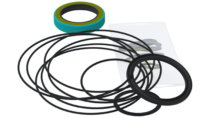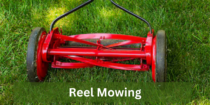Scarifying, also known as lawn dethatching or lawn scarification, is a vital maintenance practice that ensures your turf remains healthy and vibrant throughout the year. Over time, lawns accumulate thatch; a dense layer of dead grass, roots, and organic matter that can stifle the growth of healthy grass. Deep scarifying removes this thatch layer to rejuvenate your lawn, ensuring it remains lush and green. In this guide, we’ll delve into the world of deep scarifying, exploring its techniques, benefits, and the importance of choosing the right blades, all with a focus on Australian conditions.
Table of Contents
- What Is Scarifying?
- When to Scarify Your Lawn in Australia
- Deep Scarifying Techniques
- Benefits of Deep Scarifying
- Choosing the Right Blades for Australian Lawns
- Safety Precautions
- Post-Scarification Care
- Common Mistakes to Avoid
- FAQs
- Conclusion
What Is Scarifying?
Scarifying is the process of removing thatch, moss, and organic debris from the surface of your lawn. This is essential in promoting healthy grass growth by allowing water, air, and nutrients to penetrate the soil more effectively. Scarification involves using a machine called a scarifier, which has rotating blades or tines that cut into the soil and remove the unwanted layer of thatch.
The goal of scarifying is not only to remove this buildup but also to create space in the soil for new grass to grow, leading to a healthier, more vibrant lawn. In Australia, where climate conditions can vary significantly from one region to another, regular scarification is particularly important for maintaining the resilience and appearance of your lawn.
When to Scarify Your Lawn in Australia
The timing is vital when you’re planning to scarify your lawn, particularly in Australia where the seasonal conditions can vary significantly from one area to another. Generally, the best time to scarify is during the growing seasons: spring and early autumn. These periods offer optimal conditions for grass recovery, as warmer temperatures and increased moisture levels help the lawn to heal quickly after scarification.
Signs Your Lawn Needs Scarifying:
- A thick layer of thatch that feels spongy underfoot.
- Water pooling on the surface instead of being absorbed.
- Reduced grass growth or thinning patches.
- An increase in moss growth.
If you notice any of these signs, it may be time to consider scarifying your lawn. For Australian lawns, it’s essential to scarify at the right time to avoid extreme summer heat or winter cold, which can stress the grass during recovery.
Deep Scarifying Techniques
Deep scarifying requires careful planning and execution to ensure the process is effective without damaging your lawn, especially in Australia’s diverse climates.
1. Blade Depth and Spacing
The depth of the blades is critical in deep scarifying. For most Australian lawns, a depth of about 3-10 mm is sufficient. However, if your lawn has a significant thatch buildup, you may need to increase the depth slightly. Blade spacing should be set to ensure thorough coverage, typically around 30-50 mm apart. Adjusting the blade depth is especially important in regions with sandy soils, which are common in parts of Western Australia and Queensland, as these soils can be more prone to erosion.
2. Scarifier Settings
Adjust the settings on your scarifier based on the condition of your lawn. For heavy thatch, set the blades deeper, but be cautious not to go too deep, as this can damage the grass roots. Always start with a conservative setting and gradually increase the depth as needed. In Australia’s hotter regions, such as the Northern Territory, you might want to avoid overly deep scarification during the hottest months to prevent unnecessary stress on the lawn.
3. Overlapping Passes
When scarifying, make sure to overlap each pass slightly to ensure that the entire lawn is covered. This overlapping ensures that no sections are missed and that the thatch is removed evenly across the entire lawn. This technique is particularly useful for larger Australian properties, where uniform coverage is key to maintaining a healthy lawn.
Benefits of Deep Scarifying
Deep scarifying offers numerous benefits that contribute to the overall health and appearance of your lawn, making it especially valuable in Australia’s varying climates. But the benefits can only be enjoyed if the right deep scarifying blade suppliers are chosen.
1. Thatch Removal
Removing thatch is the primary benefit of scarifying. By clearing this layer, you allow the grass to breathe, which promotes healthy growth and reduces the risk of disease. In Australia, where certain regions experience high humidity, such as New South Wales and Victoria, thatch can accumulate quickly, making regular scarification essential.
2. Improved Nutrient Absorption
Without thatch blocking the way, water, fertilisers, and other nutrients can penetrate the soil more effectively. This increased nutrient absorption leads to stronger, healthier grass. This is especially beneficial in Australia’s coastal areas, where sandy soils can quickly lose nutrients.
3. Enhanced Air Circulation
Scarifying also improves air circulation within the soil, which is essential for root development and overall lawn health. Enhanced air circulation helps prevent the growth of mould and other harmful organisms, which can be a problem in Australia’s more humid regions.
Choosing the Right Blades for Australian Lawns
Selecting the appropriate blades for your scarifier is crucial for achieving the best results, particularly given the diverse grass types and soil conditions across Australia.
1. Flail Blades vs. Spring Tines
Flail blades are perfect for intensive scarifying since they are more forceful and can manage stubborn thatch and moss. Spring tines are gentler and better suited for light scarifying or routine maintenance. Choose the blade type based on the condition of your lawn and the level of thatch removal required. In regions with tougher, drought-resistant grasses like Buffalo or Kikuyu, which are common in Australia, flail blades may be more effective.
2. Blade Material (Steel vs. Carbide)
Blades are typically made from either steel or carbide. Steel blades are durable and suitable for most lawns, but carbide blades are more resistant to wear and provide a longer lifespan, making them a good choice for frequent or intensive scarifying. For Australian lawns, which can be exposed to harsh sun and varying soil conditions, carbide blades might offer better durability.
3. Blade Sharpness and Maintenance
Regularly inspect your blades for sharpness and damage. Dull blades can tear the grass rather than cut it cleanly, leading to lawn damage. Sharpen or replace blades as needed to ensure optimal performance. This is particularly important in Australia, where soil conditions can vary greatly from coastal sands to inland clays, each posing different challenges for blade wear and tear.
4. Deep Scarifier Blades
By penetrating deeper into the soil, deep scarifier blades promote better aeration and root growth. Allowing water and nutrients to reach the grassroots more effectively. For lawns with dense or drought-resistant grasses like Kikuyu or Buffalo, deep scarifier blades can be especially beneficial in restoring vitality and ensuring healthy growth.
Safety Precautions
Scarifying involves the use of sharp blades, so taking proper safety precautions is essential, especially when dealing with Australia’s tough and varied landscapes.
1. Eye Protection
Wear safety glasses to protect your eyes from debris that may be thrown up by the scarifier.
2. Proper Footwear
Wear sturdy, closed-toe shoes to protect your feet from any accidental contact with the blades.
3. Avoiding Obstacles
Before starting, clear the lawn of any obstacles such as stones, sticks, or garden decorations that could interfere with the scarifier or cause injury. In Australia, where native trees and plants can drop tough, woody debris, this step is particularly important.
Post-Scarification Care
After scarifying, your lawn will need some extra care to recover and thrive, especially given Australia’s often challenging weather conditions.
1. Overseeding
Once you’ve sacrificed, consider overseeding your lawn to fill in any bare patches and encourage new growth. This is particularly important in Australia’s dry regions, where establishing a dense lawn can help conserve moisture.
2. Fertilisation
Apply a balanced fertiliser to provide the nutrients needed for recovery. This will help the grass to establish quickly and grow more vigorously. In Australia, using a fertiliser suited to your specific region’s soil type: whether sandy, loamy, or clayey; is key to effective recovery.
3. Watering Schedule
Keep the lawn well-watered after scarifying, especially during dry spells. Adequate moisture is crucial for the newly germinated seeds and helps the lawn to recover more quickly. Given Australia’s often unpredictable rainfall, setting up an efficient irrigation system can be highly beneficial.
Common Mistakes to Avoid
Avoiding common mistakes can make the difference between a successful scarification and a damaged lawn.
1. Excessive Blade Depth
Setting the blades too deep can damage the grass roots and soil structure. Start with a shallow depth and adjust as necessary, especially in regions with softer soils, like those found in some parts of South Australia.
2. Scarifying Too Frequently
Scarifying too often can weaken the grass and lead to thinning. Adhere to a schedule of once or twice annually, based on the state of your lawn. In Australia, where grass species vary widely, it’s important to understand the specific needs of your lawn type.
3. Ignoring Soil Conditions
Scarifying wet soil can lead to compaction and damage. Wait until the soil is dry enough to allow the scarifier to move freely without compacting the soil. This is especially crucial in Australia’s clay-heavy regions, where soil compaction can be a significant issue.
FAQs
Can I scarify during any season?
No, the best times to scarify are in spring and autumn when the grass is actively growing and can recover quickly. In Australia, it’s important to avoid the peak of summer or the coldest parts of winter to prevent stressing the lawn.
How often should I scarify?
Scarifying once or twice a year is usually sufficient, depending on the thatch level and the overall condition of your lawn. For Australian lawns, the timing may vary based on your specific region’s climate and grass type.
Can I rent scarifying equipment?
Yes, many garden centres and equipment rental companies in Australia offer scarifiers for rent, making it accessible even if you don’t own the equipment.
Conclusion
Scarifying is an essential practice for maintaining a healthy, vibrant lawn in Australia. By understanding the techniques, benefits, and importance of choosing the right blades, you can ensure your lawn remains in peak condition year-round. Whether you’re a professional groundskeeper or a home lawn enthusiast, following these guidelines will help you achieve the best results from your scarification efforts.





